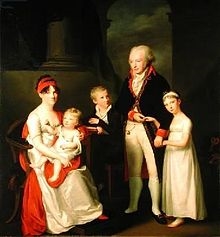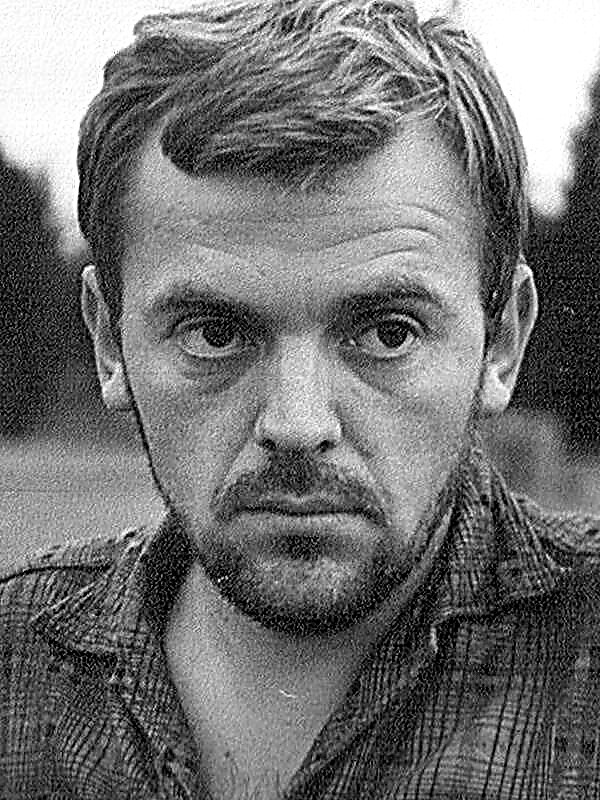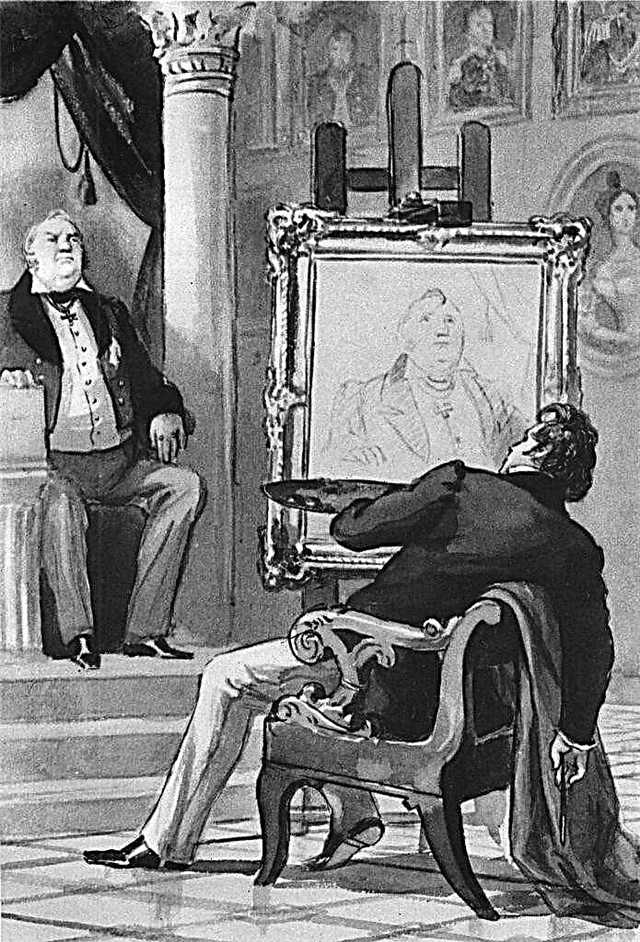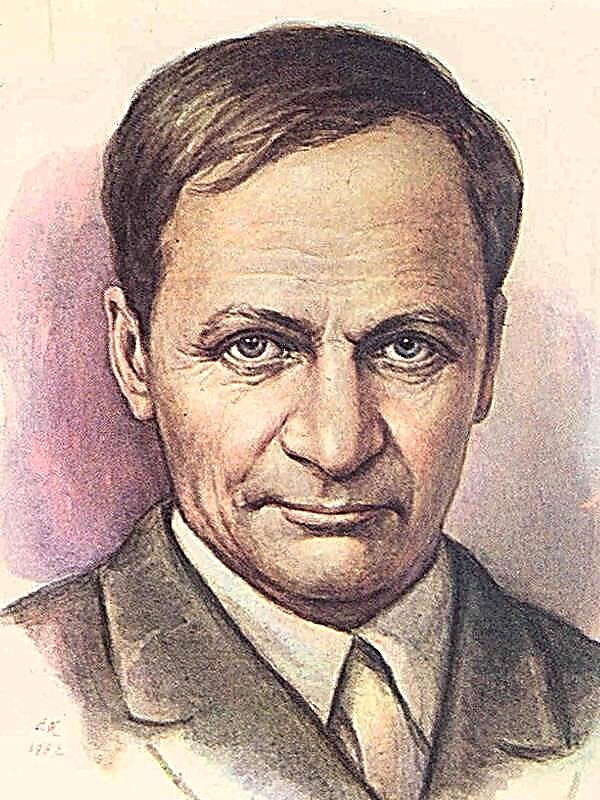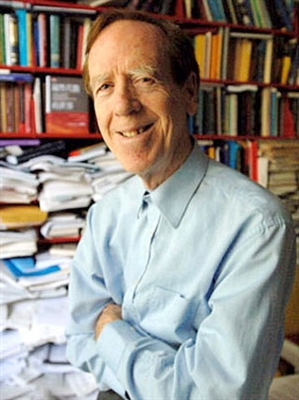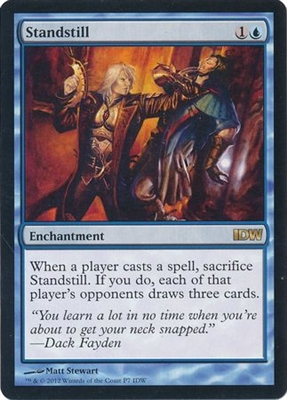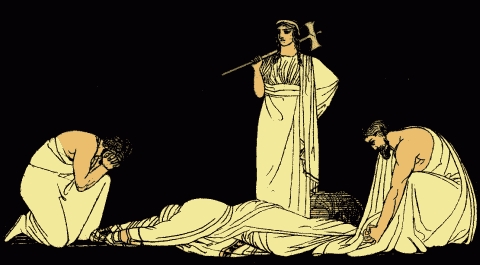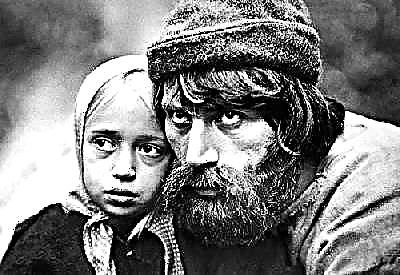The life of Anton Chekhov was a worthy source for inspiration: the author himself earned his bread, so he knew the problems of the Russian people firsthand. He made acquaintance with representatives of all classes, and therefore could compile and show the reader an objective picture of the life and customs of the Russian Empire at the turn of the century.
Origin and formation
Birth and childhood
The future classic was born on January 29, 1860 in Taganrog. Family A.P. Chekhov was large: five sons and a daughter. The writer was the third child. His birth was not very welcome, because his parents lived in poverty and struggled with intermittent financial luck. The writer spoke negatively about his childhood. The father of the family, Pavel Yegorovich, raised his children quite strictly, if not cruelly. Opening a grocery store, he ordered his sons to help him in trade, and treated them worse than workers. A.P. Chekhov spent quite a lot of time in the grocery, which subsequently had a great influence on him. Pavel Yegorovich also paid special attention to religion, which could not but affect the children. Every day, his sons sang in the church choir. This experience subsequently formed a negative attitude towards faith in Anton Pavlovich. But Chekhov's parents could not otherwise, because they were slaves to the conventions of their time.
Chekhov's mother was a meek and educated woman who read a lot and instilled in her child a passion for literature. She and her upbringing gave Anton an outlet and a good motivation - to change her life for the better, to achieve a dream.
Youth and education
The writer began his education in a Greek school. In August 1868, he entered the elementary school of a gymnasium, which would then be named after the classic. It was at this time that his views on the world began to take shape.
Here he begins his journey as a writer. He publishes humorous magazines with illustrations and captions. His first work, the drama “Fatherless”, he also writes while studying at the gymnasium at the age of 18.
History of success
At the age of 19, the classic’s life has undergone fundamental changes: he moves to Moscow, where he enters the medical faculty of Moscow University and makes his debut in print with the story “A Letter to a Scientific Neighbor”. The work was published in the journal "Dragonfly", with which the author subsequently continued to collaborate. Chekhov’s creative world is multifaceted, readers praise him, but he still can’t decide what he wants from life: a career in medicine or success in the literary field?
The main genre of his works was short humorous stories, which he published in humorous publications: “Alarm Clock”, “Shards”. There, the creative history of Chekhov began. It is noteworthy that most often the author published his works under various pseudonyms. His future profession excluded all frivolity.
After graduating from university, Chekhov begins to work as a doctor in Zvenigorod, while not leaving his literary work.
First work
The first works of Chekhov include the following works:
- Drama “Fatherless”
- The story "Letter to the learned neighbor"
- The story "Thick and thin"
- The story "Daughter of Albion"
- The story "The death of an official"
- The story "Unnecessary Victory"
- The story "Lady"
- The story "Memorial service"
Confession
The writer did not immediately receive the recognition and respect of critics. Although ordinary readers quickly drew attention to the young creator.
What distinguished Chekhov from most writers was that he did not ask global questions and did not seek to solve big problems. Many reviewers believed that the genre of humorous stories is a kind of "ceiling" for the author.
Everything changed at 26, when Chekhov received a letter from the writer D.V. Grigorovich, which said that he wasted all his potential. Grigorovich advised him to save his impressions for something more ambitious and thoughtful. This was supposed to bring glory and success to the future classic.
This letter influenced the work of Chekhov. Now his works became more serious. After 2 years, in 1888, the writer received the prestigious Pushkin Literary Prize for the short story collection "At Dusk." After that, the writer received the honor and respect of critics.
Books and collections
What did Anton Pavlovich Chekhov write? The bibliography of the writer includes several hundred works. Many works remained incomplete. Note the most famous works of Chekhov.
By the period of early creativity include several works that are considered the most remarkable and successful. This is the story “Letter to the learned neighbor”, with which Chekhov made his debut in the press, the stories known to many as “Chameleon”, “Horse surname”, “Salt”, “Death of an official”. In total, more than four hundred works belong to the period of early creativity. Most of them are humorous stories that have been published in their respective publications.
At the end of the XIX century, a new stage begins in the work of the author. His works become more serious, and the main characters are most often characters living in their own world. These include the work "Ward number 6", "House with a mezzanine", "Lady with a dog", "Student".
We should also mention Chekhov as a playwright. The theater occupied a special place in the life of the writer. And to this day on the stage you can see many performances that were staged based on Chekhov’s plays. The most significant are the famous works “Uncle Vanya”, “Three Sisters”, “The Cherry Orchard”, “The Seagull”.
Personal life
According to contemporaries, Chekhov had a lot of women. However, most often these were not fleeting hobbies, but rather long-term relationships, although the writer himself often did not take this seriously.
Women
At 28, he met Lidia Mizinova. A young ambitious girl dreamed of marrying a writer, but Chekhov himself simply preferred to have a good time. Despite this, their relationship lasted about ten years. Later, he introduces her to Ignatius Potapenko, from whom later Lydia will give birth to a child. Lydia's daughter dies as a baby. And a few years later she marries the director A. Sanin.
Then fate confronts the young Chekhov with the very young Elena Shavrova. At the first meetings, the writer does not pay attention to the girl. After 5 years, she gets married. Everything changes after a few years, when fate pushes them again. Between Chekhov and Shavrova passion flashes. Together they escape to the Crimea. However, the couple soon parted.
The most important woman of Chekhov is the actress and singer Olga Knipper. Their love story began at rehearsals of performances based on the works of Chekhov, in which Olga was involved. Then there was a period of lengthy correspondence, during which the lovers wrote to each other several hundred letters. This was Chekhov's most serious and lasting love. In 1901, the couple got married. Their marriage was happy and lasted until the death of the author. The couple has no heirs.
Children
The relations of Chekhov with Nina Korsh are noteworthy. The girl was in love with the writer from an early age and when they accidentally met at the premiere of the play “The Seagull”, she decided not to miss the opportunity. As a result of their relationship, Nina has a daughter. It is believed that this is the only child of the writer.
Interesting Facts
- The most remarkable fact about Chekhov lies in his pseudonyms. In total, the writer had about fifty options for signing his works.
- One of the writer's hobbies was philately.
- He dedicated his work, the collection “At Twilight,” for which Chekhov was awarded the Pushkin Prize, to D.V. Grigorovich, who played a special role in the formation of Anton Pavlovich as a writer.
- Chekhov’s description is fully revealed in the details: for example, the writer for a very long time managed to hide from everyone his deadly lung disease, which he acquired on Sakhalin during the trip. He was a very secretive person in everything.
- The author often attributed things to human qualities. For example, he turned to the cabinet with sweets very officially: “Dear and dear.”
- The writer’s grandfather was from serfs. It was he who bought his family from the master.
- The handsome Chekhov called his fans like apple trees - “Antonovka”.
- Anton Pavlovich’s wife was pregnant from him, but during painstaking labors she couldn’t lie down for preservation in time, she had a miscarriage.
- In the last years of his life, the author strenuously helped people, providing free assistance in the treatment of tuberculosis.
- Chekhov called the play “Three Sisters” the most difficult work, because it was very difficult for him.
- The playwright became the pioneer of the modernist revolution in the theater, his plays were innovative and not like everyone else. Everyone criticized Anton Pavlovich for this, during his lifetime no one understood his drama. But after half a century, foreign authors unanimously began to call him pioneers in the theater of the absurd.
Creativity: style, themes, genres
- Genres The main genre that brought Chekhov fame was a humorous story. It is noteworthy that it was the author who popularized the genre of small satirical stories, before which they did not use fame. Some literary scholars define the main genre of Chekhov's works as a mixture of anecdote and parable. He also wrote novels and plays. His dramaturgy became the basis for the emergence of a modernist revolution in the theater, called the Theater of the Absurd.
- Style. The main character of Chekhov’s works most often becomes a closed person, with the usual profession, without pathos and chic. The author himself, in his characters, is most interested in their psychology and behavior. He describes all this dryly, concisely, without his opinion. He believed that brevity was the basis of his literary method, and adhered to this rule in every book.
- Topics. The main themes of the works are various everyday situations. Often, heroes are tested precisely by everyday life, routine, vulgarity. According to the author himself, it is in such works that the true essence of man is revealed, because there are no plots in life, there are sluggish processes that erase everything original and living from the person. This is his feature.
Death
The cause of Chekhov's death is tuberculosis. Presumably, he acquired the disease during a trip to Sakhalin, when he had to go for a long time in wet clothes.
The disease worsened in the last years of the author’s life. In this regard, he was sent to Yalta, where he spent most of the last years of his life, only occasionally coming to Moscow.
In July 1904, Chekhov went to a resort in Germany. The writer died on July 15. Olga Knipper went on a trick to deliver her husband’s body to Moscow and avoid cremation.
Chekhov was buried at the Novodevichy cemetery.

